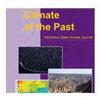The climate and vegetation of Europe, northern Africa, and the Middle East during the Last Glacial Maximum (21 000 yr BP) based on pollen data
IF 3.2
2区 地球科学
Q1 GEOSCIENCES, MULTIDISCIPLINARY
引用次数: 0
Abstract
Abstract. Pollen data represent one of the most widely available and spatially resolved sources of information about the past land cover and climate of the Last Glacial Maximum (LGM; 21 000 yr BP). Previous pollen data compilations for Europe, the Mediterranean, and the Middle East, however, have been limited by small numbers of sites and poor dating control. Here we present a new compilation of pollen data from the region that improves on both the number of sites (63) and the quality of the chronological control. Data were sourced from both public data archives and published (digitized) diagrams. The analysis is presented based on a standardized pollen taxonomy and sum, with maps shown for the major pollen taxa and biomes and the total arboreal pollen (AP), and on quantitative reconstructions of forest cover and of winter, summer, and annual temperatures and precipitation. The reconstructions are based on the modern analogue technique (MAT) adapted using plant functional type (PFT) scores and with a modern pollen dataset taken from the latest Eurasian Modern Pollen Database (EMPD) (∼8000 samples). A site-by-site comparison of the MAT and the inverse modelling method shows little or no significant difference between the methods for the LGM, indicating that the presence of low-CO2 conditions and no modern analogue during the LGM does not appear to have had a major effect on MAT transfer function performance. Previous pollen-based climate reconstructions using modern pollen datasets show a much colder and drier climate for the LGM than both inverse modelling and climate model simulations do, but our new results suggest much greater agreement. Differences between our latest MAT reconstruction and those in earlier studies can largely be attributed to bias in the small modern dataset previously used and to differences in the method itself (Brewer et al., 2008; Salonen et al., 2019). We also find that quantitative forest cover reconstructions show more forest than previously suggested by biome reconstructions but less forest than suggested by simply the percentage of arboreal pollen, although uncertainties remain large. Overall, we find that LGM climatic cooling and drying were significantly greater in winter than in summer but with large site-to-site variance that emphasizes the importance of topography and other local factors in controlling the climate and vegetation of the LGM.基于花粉数据的末次冰川极盛时期(公元前 21 000 年)欧洲、非洲北部和中东的气候与植被
摘要花粉数据是有关末次冰川极盛时期(LGM;公元前 21000 年)过去的土地覆盖和气候的最广泛、空间分辨率最高的信息来源之一。然而,以前对欧洲、地中海和中东地区的花粉数据进行汇编时,受到了地点数量少和年代控制差的限制。在此,我们对该地区的花粉数据进行了新的汇编,在遗址数量(63 个)和年代控制质量方面都有所改进。数据来源于公共数据档案和出版的(数字化)图表。分析基于标准化的花粉分类和总和,并显示了主要花粉类群和生物群落以及树栖花粉总量(AP)的分布图,以及森林覆盖率和冬季、夏季及全年气温和降水量的定量重建。这些重建是基于现代模拟技术(MAT),利用植物功能类型(PFT)评分和最新欧亚现代花粉数据库(EMPD)中的现代花粉数据集(8000 个样本)进行的。对 MAT 和反建模方法进行的逐点比较显示,这两种方法在远古时期几乎没有显著差异,这表明远古时期低二氧化碳条件的存在和没有现代类似物似乎并没有对 MAT 转移函数的性能产生重大影响。以前使用现代花粉数据集进行的基于花粉的气候重建显示,远古至近代的气候比反演模拟和气候模式模拟都要寒冷干燥得多,但我们的新结果表明两者的一致性要大得多。我们最新的 MAT 重建结果与之前研究结果之间的差异主要归因于之前使用的小型现代数据集的偏差以及方法本身的差异(Brewer 等人,2008 年;Salonen 等人,2019 年)。我们还发现,定量森林覆盖率重建结果显示,森林覆盖率高于之前生物群落重建所显示的森林覆盖率,但低于简单的树栖花粉百分比所显示的森林覆盖率,尽管不确定性仍然很大。总之,我们发现 LGM 气候变冷和变干在冬季明显大于夏季,但地点与地点之间的差异很大,这强调了地形和其他地方因素在控制 LGM 气候和植被方面的重要性。
本文章由计算机程序翻译,如有差异,请以英文原文为准。
求助全文
约1分钟内获得全文
求助全文
来源期刊

Climate of The Past
地学-气象与大气科学
CiteScore
7.40
自引率
14.00%
发文量
120
审稿时长
4-8 weeks
期刊介绍:
Climate of the Past (CP) is a not-for-profit international scientific journal dedicated to the publication and discussion of research articles, short communications, and review papers on the climate history of the Earth. CP covers all temporal scales of climate change and variability, from geological time through to multidecadal studies of the last century. Studies focusing mainly on present and future climate are not within scope.
The main subject areas are the following:
reconstructions of past climate based on instrumental and historical data as well as proxy data from marine and terrestrial (including ice) archives;
development and validation of new proxies, improvements of the precision and accuracy of proxy data;
theoretical and empirical studies of processes in and feedback mechanisms between all climate system components in relation to past climate change on all space scales and timescales;
simulation of past climate and model-based interpretation of palaeoclimate data for a better understanding of present and future climate variability and climate change.
 求助内容:
求助内容: 应助结果提醒方式:
应助结果提醒方式:


